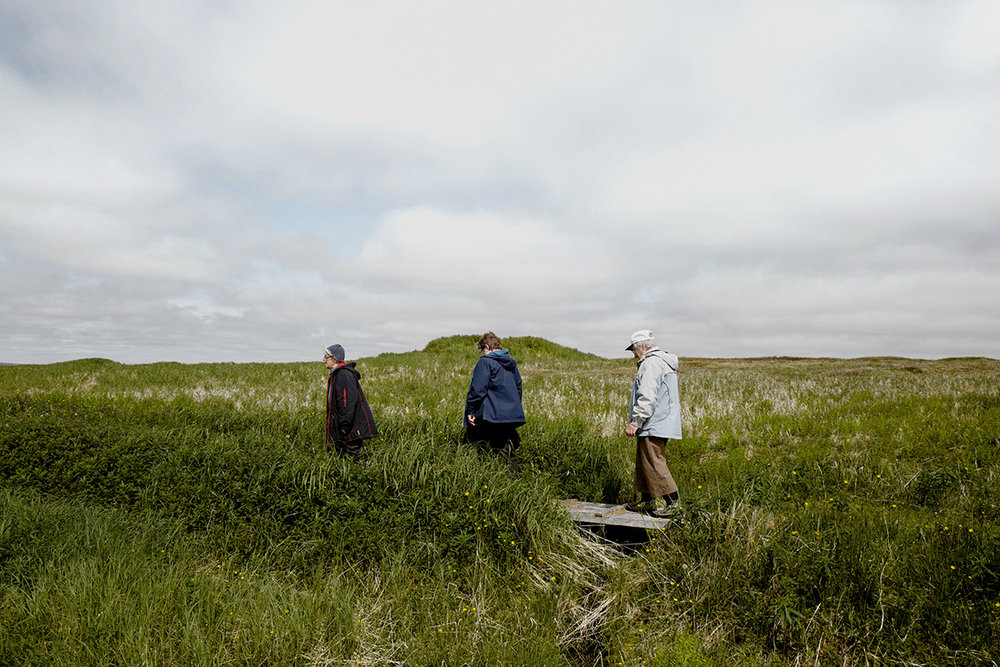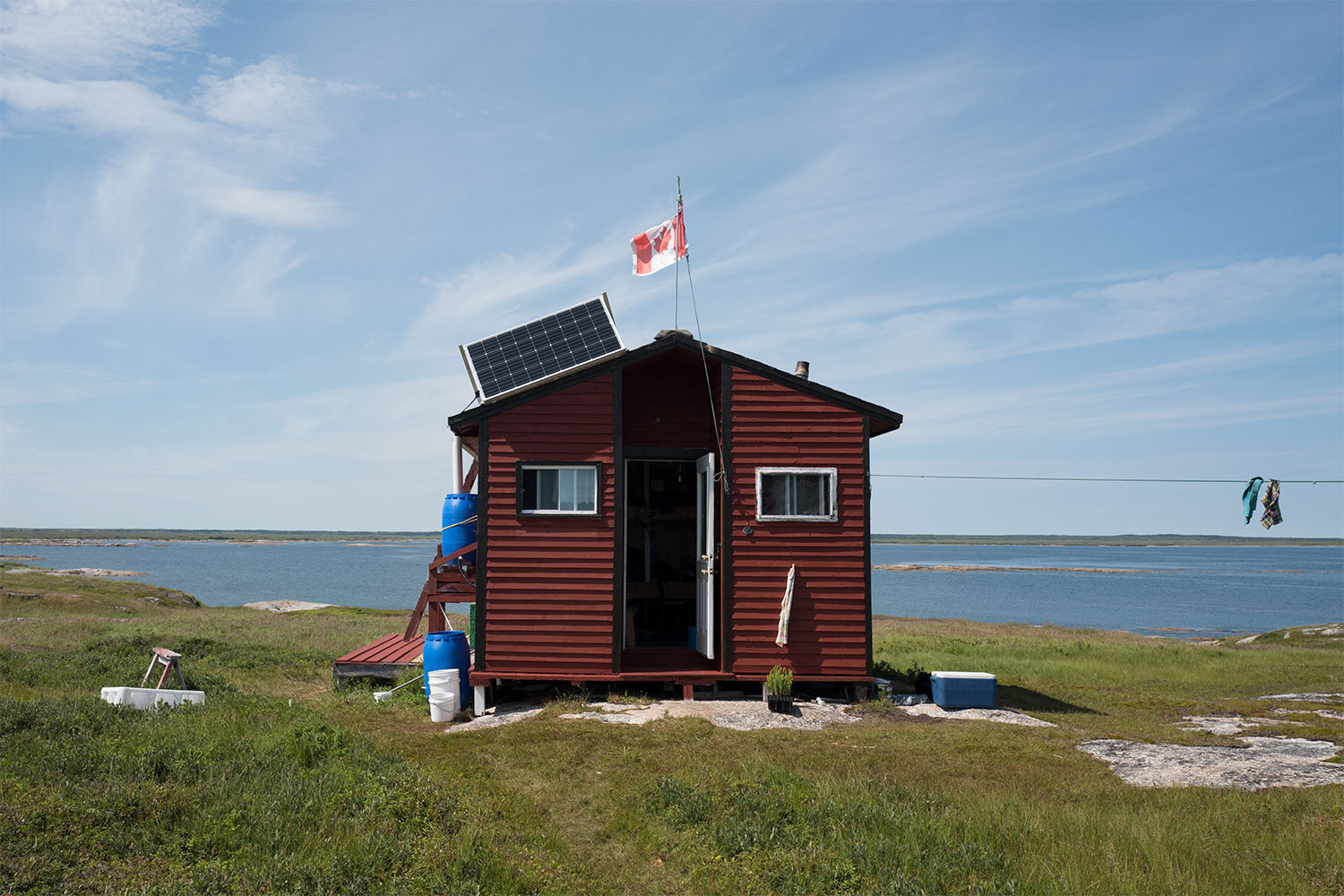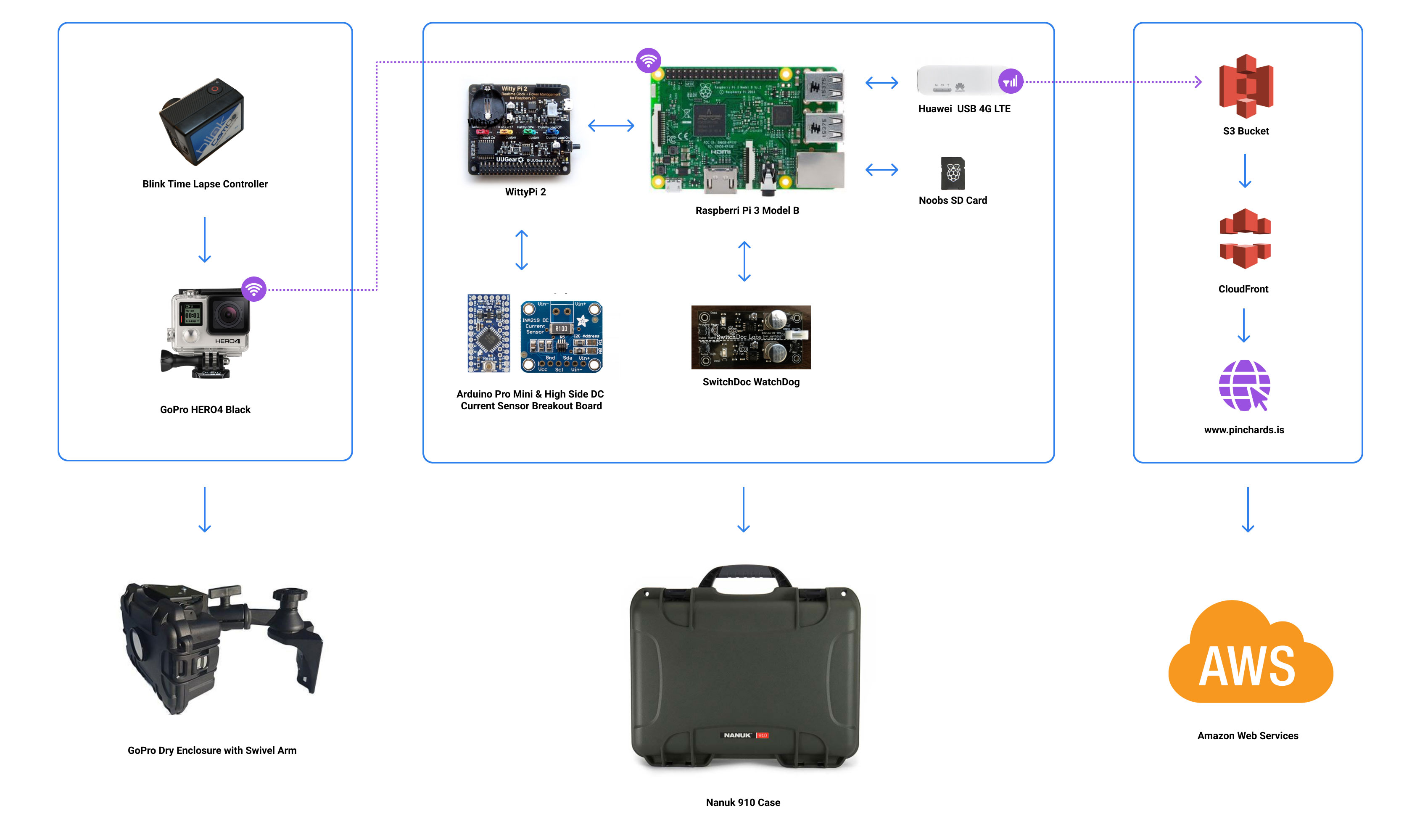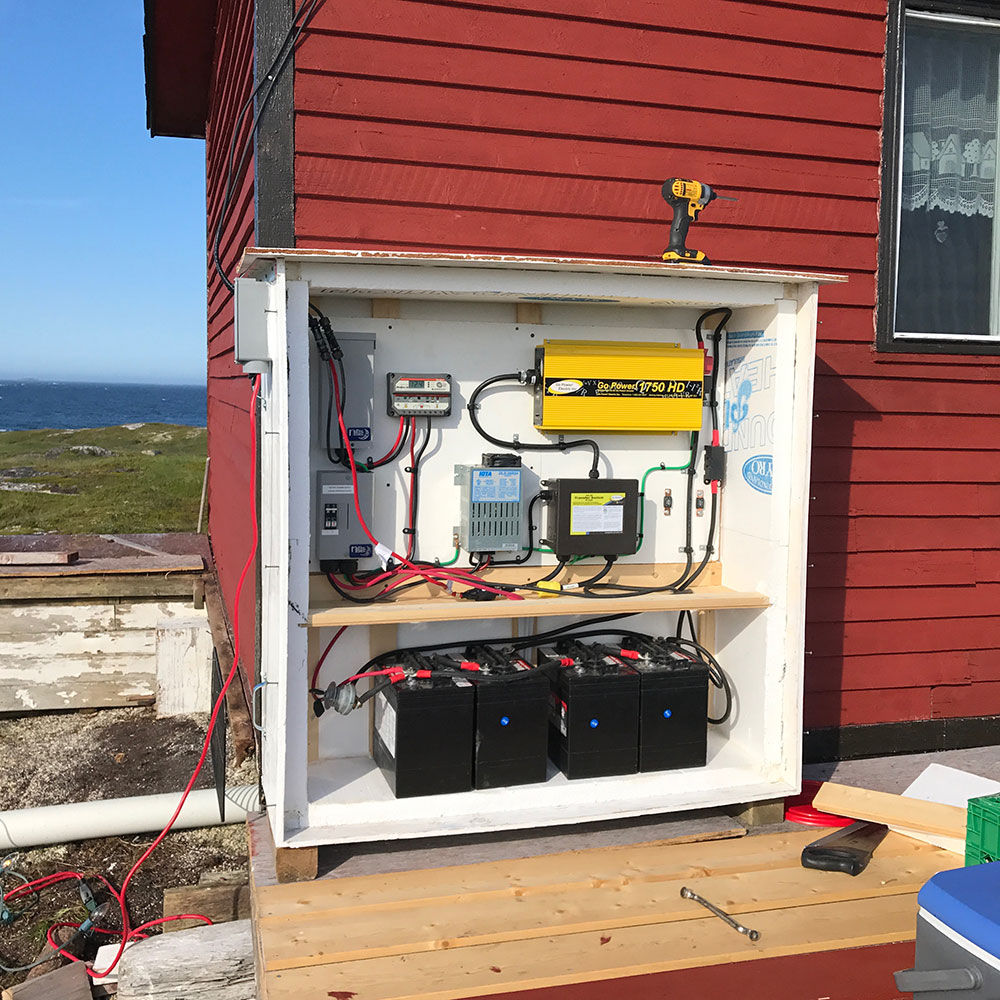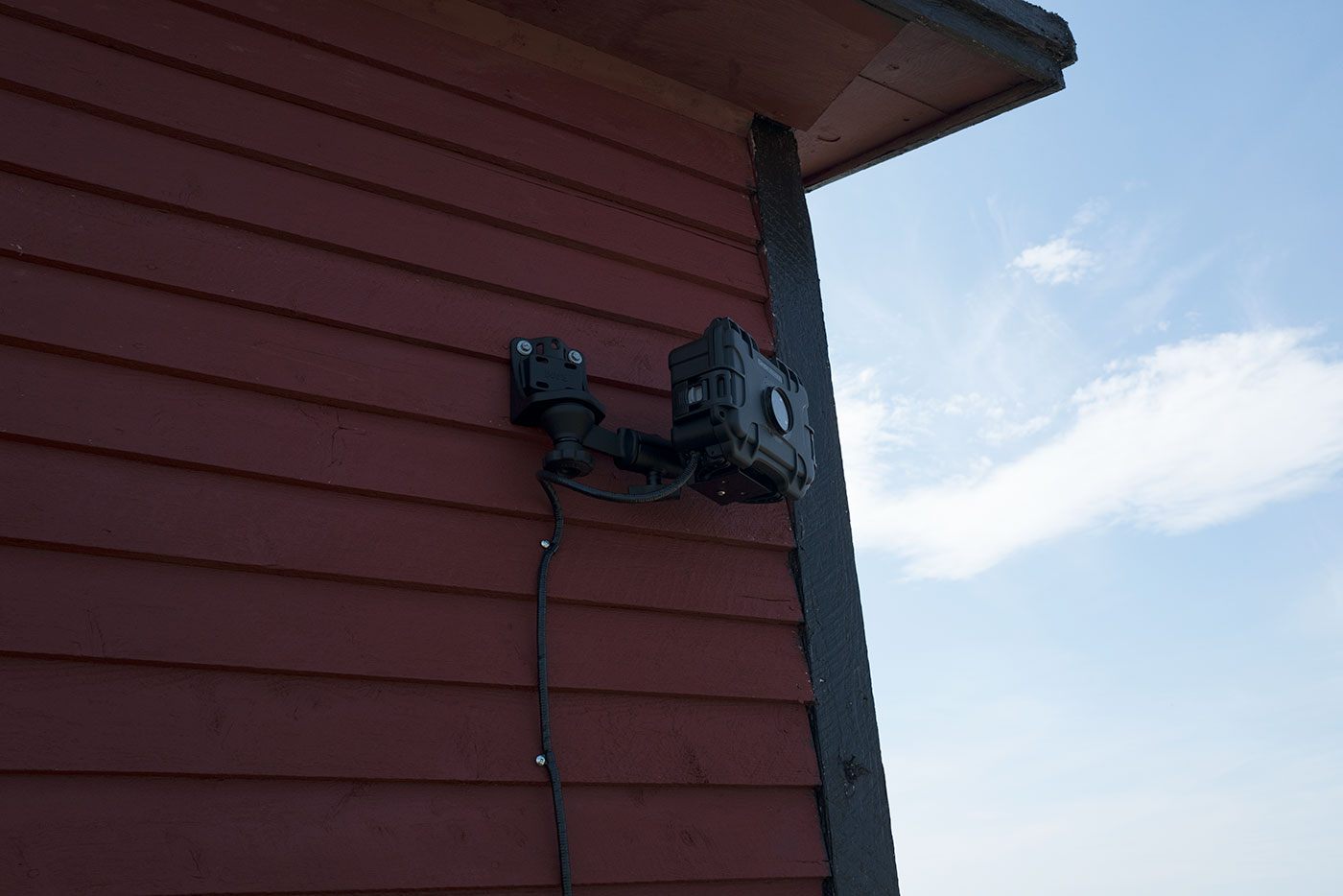What we used:
We initially wanted to use the GoPro HERO5, but the Cam Do enclosure did not support the GoPro HERO5 at the time. Creating a DIY weatherproof enclosure didn’t add any benefit since the image quality between GoPro HERO4 and GoPro HERO5 is the same; therefore, we made the decision to go with the GoPro HERO4.
The interval timer turns on the GoPro every hour between 8 AM and 8 PM. The GoPro is modified with the Pro-csiController firmware from Cam Do and runs a custom `autoexec` script to take a photo, turn on the GoPro WiFi and then put the camera in standby mode to conserve power. In the event that something goes wrong, such as no power for a period of time, the interval timer will attempt to turn on the camera when suffiecent power is available. As long as the camera WiFi is enabled we can wake and control the camera remotely via the Raspberry Pi.
Standard Raspberry Pi with a 16GB Noobs SD Card running Raspbian OS.
A real time clock (RTC) that turns on the Raspberry Pi night for 30 minutes. The Raspberry Pi runs a Python script that:
- Wakes up the GoPro via WiFi.
- Downloads and deletes the latest images from the GoPro.
- Uploads the images to an Amazon Web Services S3 Bucket and deletes the images from the Raspberry Pi.
- Puts the GoPro into standby mode and shuts down the Raspberry Pi to conserve power.
We added a power-monitoring meter to avoid power issues that might corrupt the SD Card if the Raspberry Pi shuts down unexpectedly. In the event that the power supply is low, the Arduino triggers the WittyPi 2 to shut down the Raspberry Pi until there is sufficient battery to power the device.
Since the Raspberry Pi is managed remotely the WatchDog monitors the health of the Raspberry Pi and automatically restarts the system in the event of a malfunction.
The USB hotspot is connected to the Raspberry Pi USB port with a SIM card and mobile internet plan from Bell Canada. This allows us to connect to the internet via USB and reserve the Raspberry Pi WiFi to connect to the GoPro WiFi. At ±6mb per photo, 13 photos per day, we’re using ±2.3gb per month.
USB cables, extensions, and repeaters
All cables were weatherproof with plastic tubing and electrical tape.
Home of the GoPro. We made several modifications to the enclosure:
- The case has an opening on the top, which seemed problematic considering the harsh environment. We deduced to silicone the entire top opening to avoid potential leaking.
- We drilled a hole in the bottom of the case to connect a USB cord with a repeater to power the GoPro. We applied silicone the USB cable around the entire opening of the hole to prevent potential leaking.
- The enclosure comes with a standard screw on clear camera filter attached to the opening for the GoPro lens. We appliked silicone to the entire edge of the filter to prevent potential leaking.
- The first mornings we were getting condensation build up on the filter preventing visibility to the GoPro lens. We decided to remove the air pressure filter of the Cam Do case in an attempt to allow more air flow. Since this modification, the filter did not accumulate any further condensation.
Holds and insulates the Raspberry Pi with add-ons and the USB hotspot.
130 Watt Solar Power System
We worked with Gerry of Newfound Energies in St. John’s Newfoundland to help design a solar panel system that would intermittently power the system we were designing. Because Pinchard’s Island receives approximately 1-1.5 hours of sunlight during the winter, we decided to go with a larger solar power system in hopes that it would be enough to power the system during the winter, allow for the charging of other devices (laptops, phones, etc) during the summer and an investment in system that could be used for future projects.
- 130-watt solar panel pointed at ±20 degrees towards the path of the sun during the winter. Adjusted to ±60 degrees in the summer.
- 40 amp solar charge controller
- 1500-watt inverter
- Four 6 volt, 385 amp hour deep cycle batteries
- 30 amp automatic transfer switch
- 30 amp battery charger
DIY Weatherproof Box
Roger built an insulated, weatherproof housing unit for the solar power system.
Allows us to connect and control to the Raspberry Pi remotely via the command line interface.
S3 Bucket for the storing the photographs with CloudFront to deliver the images to this website.
A series of wifi commands that enable to to control the GoPro remotely.
